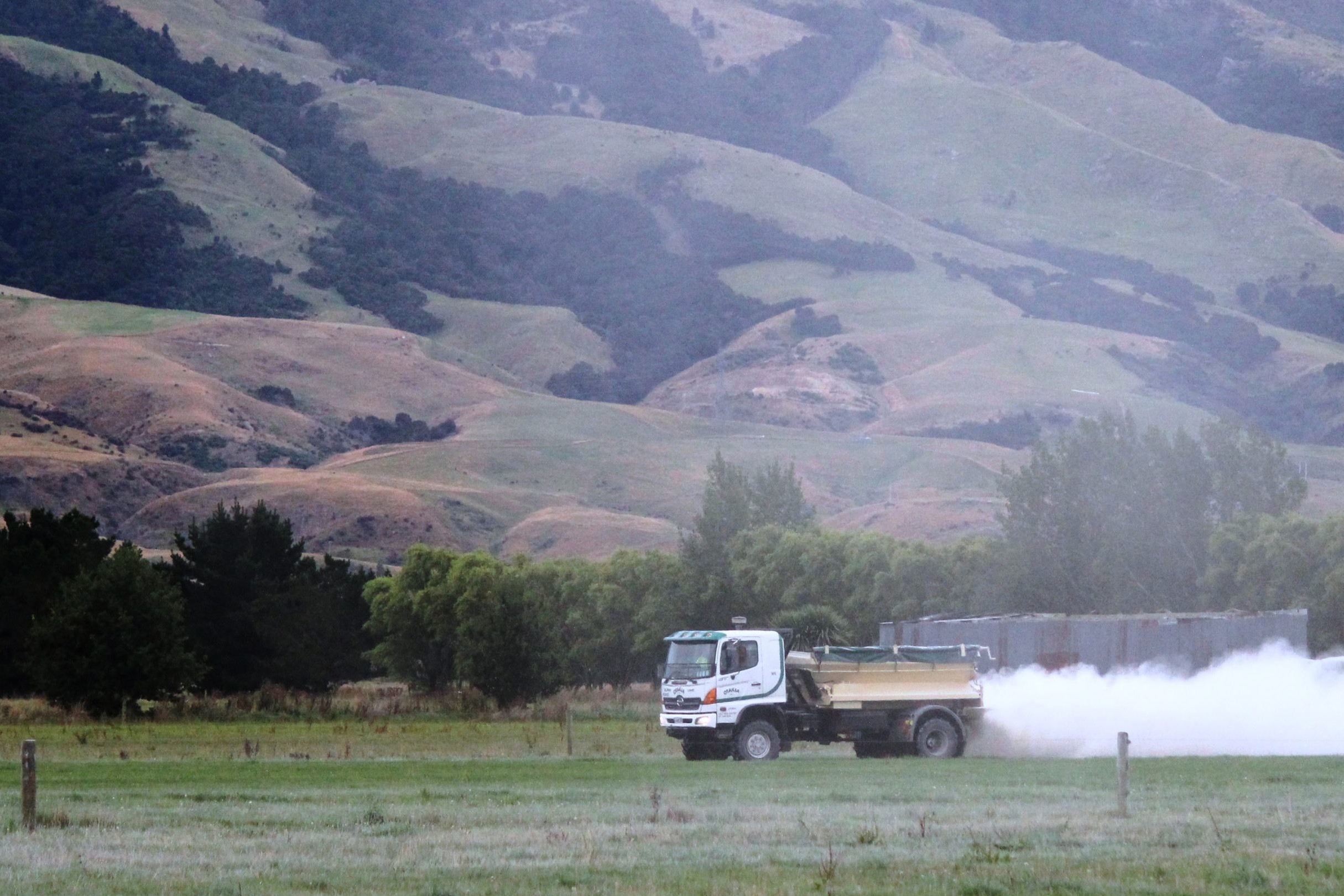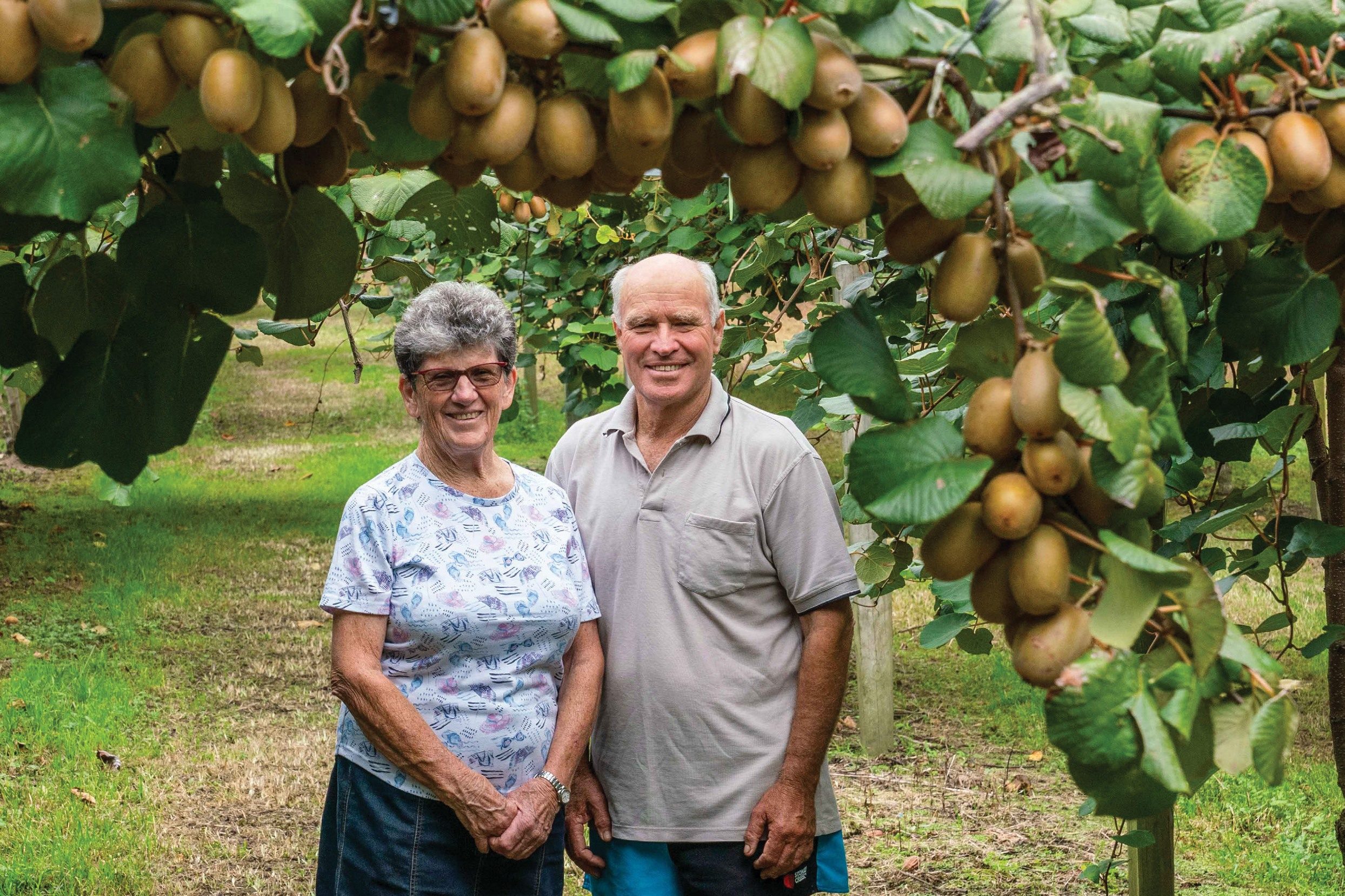A switch from sharemilking in South Canterbury to farm ownership on the West Coast has taken the pressure off the Hart family. Anne Hardie reports.
Right from calving, Jeremy and Anna Hart are getting the cows in for three milkings in two days and in keeping with doing things a bit differently, they’re also using alternative fertilisers on their West Coast farm.
It makes them an ideal monitor farm for others to observe, especially when they are getting good results in production and reproduction, with 95% of the herd calving in six weeks.
They are into their fifth season on their 155 effective hectare farm in the Kowhitirangi Valley where they milk 300 Jersey-cross cows at the peak of the season and achieved 440kg milksolids (MS) per cow last year with heifers making up 25% of the herd. Straight from calving, the herd is milked at 5am and 7pm one day and then midday the second day.
It has worked well for the busy family of four as Anna was elected on to the Westland District Council in October and she is also the only woman on the Westland Suppliers’ Committee. Her council role has to fit with her full-time job as a chief financial officer for New Zealand Institute for Minerals to Materials Research, but she wanted to add another rural voice on the council and she thought her background in agriculture accounting could be useful. Previously, she was a financial controller for the Van Leeuwen Dairy Group.
They never planned to buy a dairy farm on the West Coast. In fact, dairying was always considered a temporary measure that would provide the finance to buy a sheep and beef farm because that was Jeremy’s background and dream.
Their dairy path led to sharemilking contracts on 1600 to 2000-cow herds for the same farm owners, including a conversion where they milked 2000 cows between two dairies in South Canterbury with eight permanent staff and more at the peak of the season. They were there for nine years with the same owners and worked through a conversion of the neighbouring farm which enabled them to milk the cows in two dairies.
Along the way they bought a 107ha dryland block and converted it to deer, leased a 200ha neighbouring block and ran up to 600 hinds.
The next step was farm ownership, but buying a further dryland block was not financially sustainable, nor were dairy land prices in Canterbury. So they decided to look over the Alps at the West Coast for something more affordable. What they discovered was an ideal dairy country with natural irrigation and the ability to be self-contained with lower stocking rates and a lot less pressure.
“It was a breath of fresh air moving over here. From being on the phone all the time to it hardly ringing and one full-time staff.”
One of their Canterbury employees, Melvin Silubrico, from the Philippines, had been with them eight years and they wanted him with them on their own farm so convinced him to follow them over the Alps.
“We’d be lost without him,” Anna says. “He does all the AI (artificial insemination) here, rears the calves and is good with livestock. We see a lot of people who can never get away together because they have no relief and we never wanted that.”
In that first year the bank manager told them to budget on $6.80/kg MS and then the payout was $3.80/kg. Jeremy says they are still playing catch up from those poor payout years and this is really the first season they can farm properly.
They usually try to keep farm working expenses (FWE) at $3.80/kg MS, but there’s been a lot of deferred repairs and maintenance through years of poor payout. Following Yili Group’s purchase of the dairy cooperative and the expected higher payouts, they plan to tackle some of those jobs and FWE could rise to $4.10/kg MS.
This season has had its challenges and even for the West Coast, spring was wet with 600mm of rain delivered in just 13 days during November. Generally, it’s more like three metres to 3.5m a year for them which they say is manageable and good irrigation.
When they bought the farm, they purchased the herd as well, realising the benefits of starting with cows that knew the farm and more importantly, the climate. Right from the start, they began with three-in-two milkings which they had been doing on the larger Canterbury farm, though instead of the strict 16-hourly milkings, the latest they milk is 7pm and it varies between 14 and 17 hours between milkings. If it’s raining and the cows are standing in a corner of the paddock, they simply start milking earlier.
“We were doing true 16-hour milkings in Canterbury and the guys weren’t getting out of the shed until midnight,” Jeremy says. “Here we’ve refined it and we like these hours.”
Anna says their three-in-two regime has taken the pressure off the cows which has resulted in less lameness, less mastitis and more production.
“We’re doing more production than some on twice-a-day and we’ve dropped out a milking. The only reason we’re not going to once-a-day (OAD) is it would mean losing Melvin.”
Jeremy says they have done the figures for OAD milking which shows they would save money, but it would also tie them to the farm with little time to enjoy the West Coast’s lifestyle such as tramping and jet boating.
Along with three-in-two milking from the start of the season, they work on balancing the soils with a biological mix from Jeremy’s uncle who has a fertiliser business in Canterbury, Top Soils. They use very little urea, no superphosphate and instead add ingredients such as the natural mineral deposits of guano and magnesium-rich dolomite.
They’ve been using the slow-release mix for three years now and Jeremy says the clover is increasing in the pasture and last year they had dropped to 90 units of nitrogen and had got rid of the urea silo. He says the costs are similar to regular fertiliser programmes, though he does five rounds of the farm each year with their fertiliser mix because of the high rainfall.
Granulated RPR with guano replaces superphosphate while sulphate of ammonia is used instead of urea and the latter is what follows the cows every second round, while a maintenance fertiliser goes on the paddocks three times a year. Each year the farm also gets one tonne/ha of lime and 0.5t/ha of dolomite.
“I’m not a great believer in putting something on every time after the cows,” Jeremy says. “I like to make the clover do the work.
“This is more for soil balance to make the soil work for you,” Jeremy says. “We’ve seen improvements with animal health and production is up to 440kg MS/cow, though that’s also due to three-in-two.”
Another bonus of the biological fertiliser is that proposed environmental regulations don’t worry them because they have already cut nitrogen use and cattle numbers.
“All the creeks are fenced and aren’t too difficult to move. The only thing I don’t like about it is that someone will come here and go through all the paperwork and send us a bill which will mean an additional cost.”
And as Anna says, they already have enough audits done on farms.
Reproduction also benefits from their farming system with 80% of the cows in calf within three weeks last year and 97% in calf by six weeks. Among the three-year-olds which is statistically the most challenging group on dairy farms for reproduction, 77% were in calf by three weeks and 95% by six weeks. The results are largely due to less pressure on the cows, especially the three-in-two milkings from the day the cows calve.
“I think the biggest benefit of 3in2 is doing it all season because it tightens up your calving,” Jeremy says.
Their policy is to AI for nine weeks and Melvin takes care of that. He trained as a veterinarian in the Philippines and worked in Saudi Arabia as an AI technician which makes AI on the farm a breeze for Jeremy and Anna. By having an onfarm technician, they can AI every milking and they say it needs to be that often to catch cycling cows. For the first six weeks of AI they use Jersey semen, followed by three weeks of short-gestation crossbred. Jeremy says they use crossbred semen rather than short-gestation Hereford semen for easier calving in their Jersey herd. No bulls follow AI and the empty rate for the herd last year was 9%.
Calving begins a bit later on August 10 and the cows are dried off about May 25 which gives them 272 days in milk. Colostrum at the beginning of the season is sold for its premium and brings in between $15,000 and $17,000 a year that Jeremy describes as a good top-up with no more work.
From calving, the cows get meal in the shed and that continues throughout the season, adding up to 0.5t/cow/year. Last year they used wheat-based pellets, but it cost $85/t to get it from South Canterbury to West Coast. This year they switched to a blend of dried distillers grains (DDGS), tapioca and palm kernel which has the lower transport cost of $50/t from Rolleston. Apart from benefiting the cows, it also saves pasture damage as Jeremy says fuller cows don’t move around so much in the paddock on those cold, rainy days.
“The best thing we did when we came here was put a meal feeding system in the shed,” Anna says.
“It’s getting good quality feed into them,” Jeremy continues. “In the shed it’s under cover and on those wet days we try to up it a bit.”
Once winter arrives, the herd remains at home where they feed on a 14ha crop of swedes, silage and straw, while the heifers graze grass. Though pasture growth slows, it doesn’t stop growing entirely.
They have three stand-off areas for when it really rains, which it does regularly on the West Coast, and quite often split the herd if it’s raining for any length of time. Jeremy says the cows are more settled in a smaller herd so cause less damage to the ground.
Shingle feedpads are also useful for feeding out silage rather than wasting it in the paddocks. One is being built behind the dairy as another option for autumn and early spring, with the community helping to get the job done. They say it’s one of many examples of the community spirit that exists in the region.
“If anyone is sick or on holiday, you have people willing to help each other out,” Anna says.”It’s what we like about the local community.”
Jeremy has built a wooden bar in the machinery shed and it’s a good way to gather a few neighbouring dairy farmers at the end of the week to unwind.
“Sometimes you can let things get to you, but then you see some of the other guys and catch up and realise everyone has the same battles.”
As well as community, Anna says they have a good lifestyle balance and the as for the weather, well, that’s just something you manage, she says.





